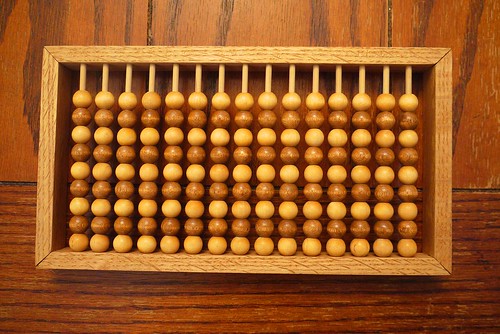It turns out there doesn't seem to be a lot of information out there about a 9 bead abacus. The Japanese use a 5 bead variant which seems like it would work extremely well for PRACTICAL day to day usage, but I'm more interested in the educational utility of an abacus at this point and time. I managed to find one guy, Joe VanCleave, who has written down his thoughts on the 9 bead abacus. His thoughts are totally in alignment with my own, but he has clearly given it more in depth thought. In addition to the ideas I already had, Joe proposes using a two-tone alternating color system to help the user distinguish between a 6 and a 7 for example. I really like the idea of using two color tones to "break it up" a little and his prototype looks quite good.

Joe doesn't seem to have any actual data posted pertaining to his research, but based on his experience and analysis, I am going to say his educated guesses about the value of a 9 bead abacus are spot-on.
The way I see this working is by starting a kid off with the 9 bead abacus, they get the conceptual understanding of place value, addition, and subtraction. With a large enough number of columns, and perhaps a separator of some sort, one could easily design an abacus to support "chunking" which would be useful for multiplication and more difficult subtraction operation. After a kid "gets it" with respect to place value, the parent/teacher could then provide the child with a 5 beaded soroban, which seems to be the next logical step in the progression of numerical education from a logical perspective to a practical perspective.
Check out this video of a 9 year old who has become so proficient with a soroban that she is able to do arithmetic simply by imagining the presence of a soroban. To me, that is of questionable value from an educational standpoint. Performance-wise, it is certainly impressive. But I feel the most important part of this whole abacus thing is the conceptual relevance of place-value.